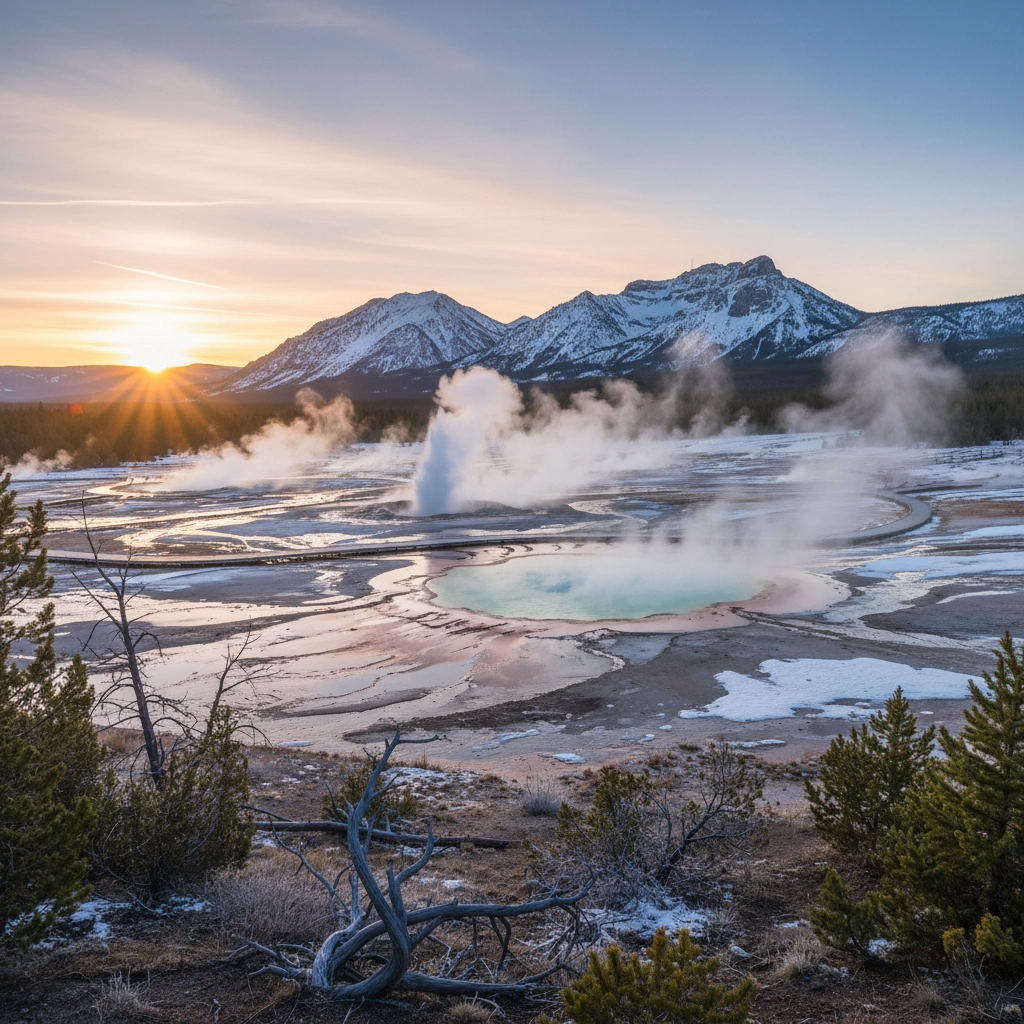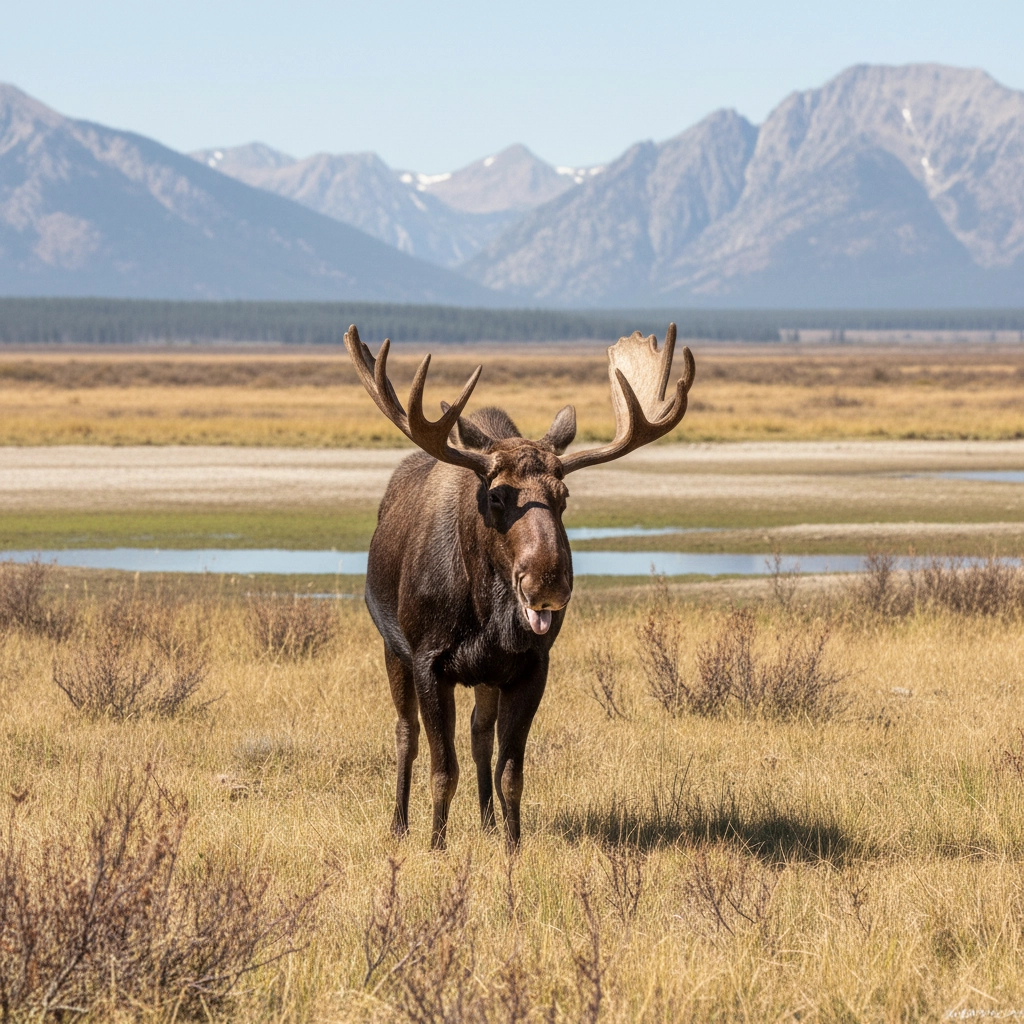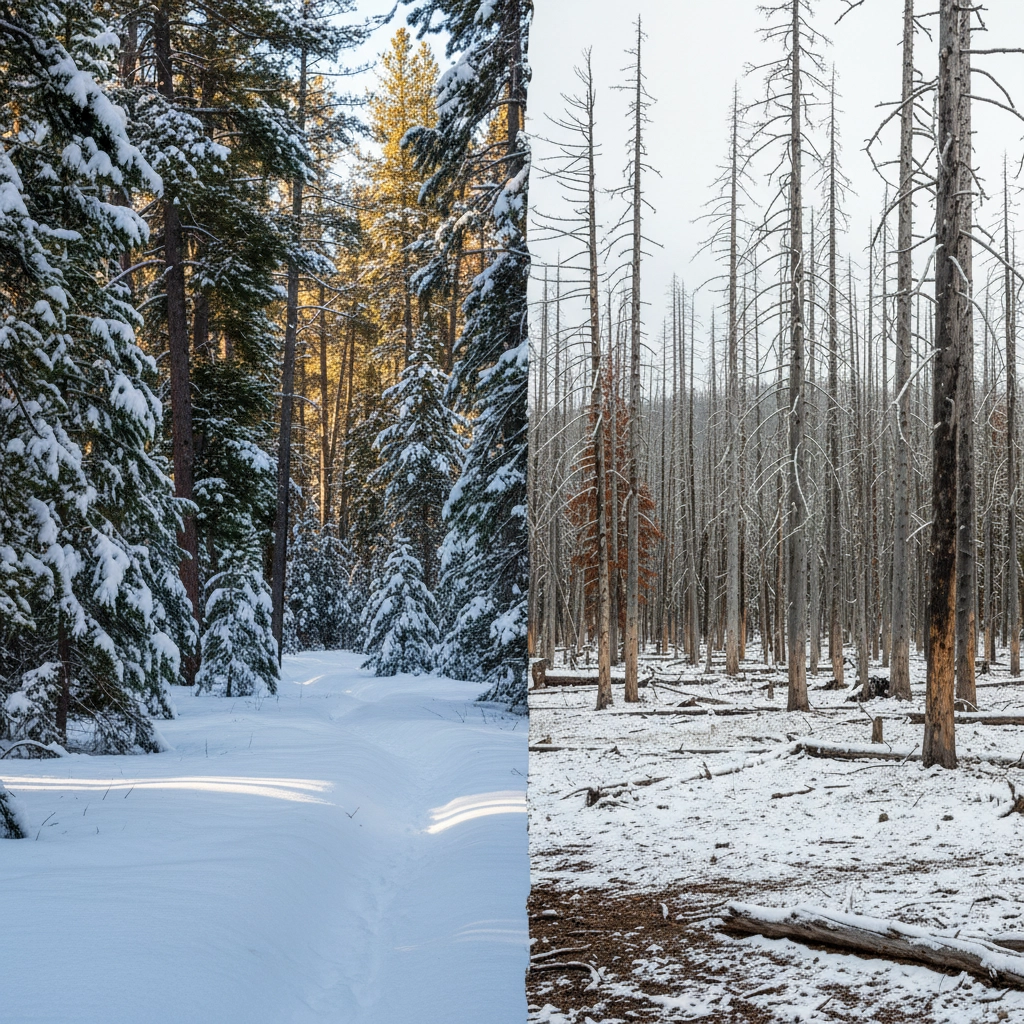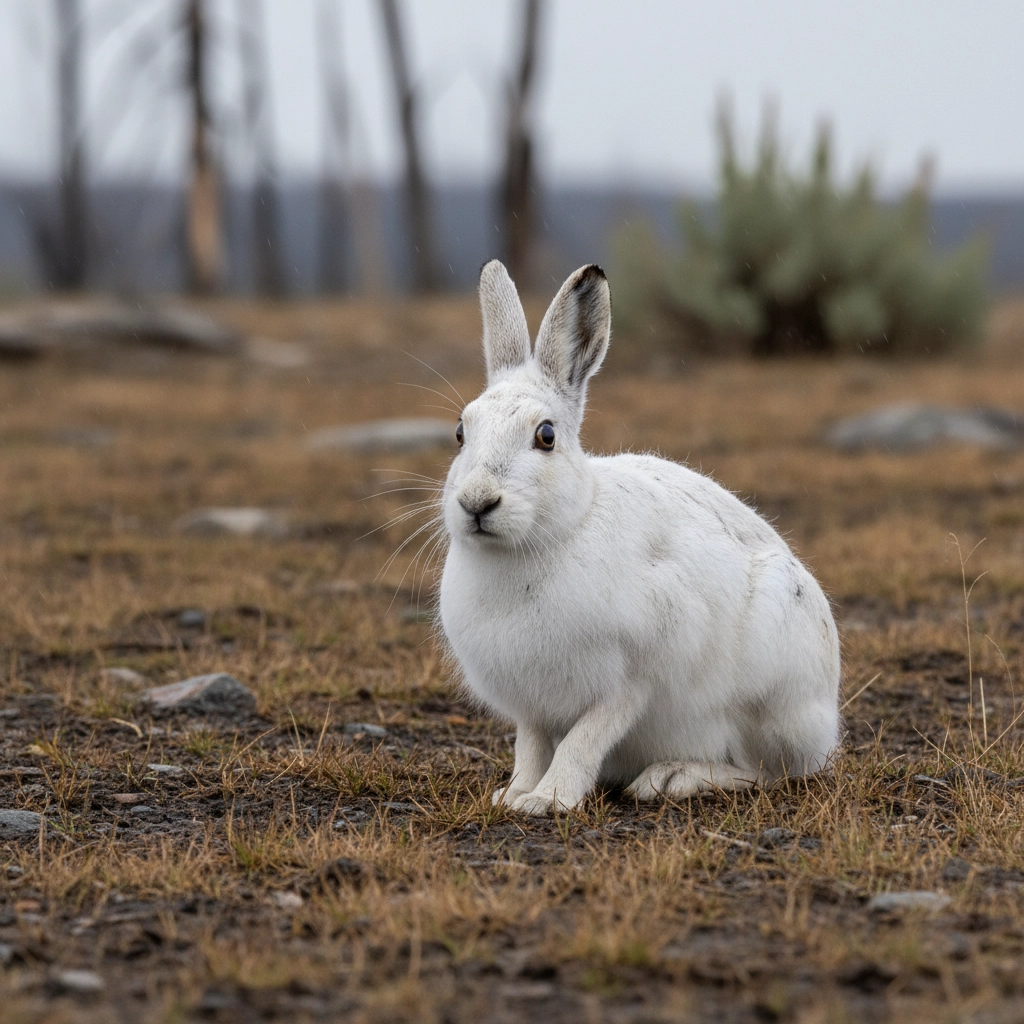The Impact of Climate Change on Yellowstone's Wildlife
- Caleb Mullenix
- 8 hours ago
- 5 min read
Understanding the effects of climate change on Yellowstone's wildlife represents one of the most critical scientific learning opportunities available to students today. The Greater Yellowstone Ecosystem, long considered among Earth's last truly wild places, now serves as a living laboratory demonstrating how rapidly changing environmental conditions reshape entire biological communities. For educators planning student expeditions to this iconic landscape, recognizing these climate impacts provides essential context for meaningful field-based learning experiences.
Temperature Shifts Transforming Yellowstone's Ecosystem
The region has experienced dramatic warming that affects wildlife populations at every level. Stream temperatures have increased by 1.8°F over the past century, while projections indicate potential temperature rises of 5 to 10 degrees Fahrenheit by 2100 if current emission trends continue. Towns surrounding Yellowstone, including Bozeman, Montana and Jackson, Wyoming, could experience 40 to 60 additional days annually with temperatures exceeding 90°F.
These temperature changes fundamentally alter seasonal dynamics that wildlife species have depended upon for millennia. Spring thaw now occurs several weeks earlier than in 1950, with peak annual stream runoff advancing by eight days. The agricultural growing season has extended by nearly two weeks compared to conditions 70 years ago. Students observing these phenomena can witness firsthand how seemingly small temperature variations create cascading effects throughout entire ecosystems.

Declining Snowpack and Precipitation Pattern Changes
Snowfall patterns demonstrate some of the most dramatic climate-related changes in the Greater Yellowstone region. Since 1950, snowfall has declined by 53 percent in January, 43 percent in March, and by 96 percent in September, with annual snowfall decreasing by nearly two feet overall. This represents a fundamental shift in winter conditions that species evolved to endure over millions of years.
As warming continues, precipitation increasingly falls as rain rather than snow. While annual precipitation may increase by 9 to 15 percent by 2100, the net effect projects drier conditions due to reduced snowpack, increased evaporation, and higher temperatures. Water availability will decline, stressing vegetation and dramatically increasing wildfire risk across the ecosystem.
These changes provide students with concrete examples of how climate systems interconnect. Reduced snowpack affects stream flow timing, which influences aquatic habitats, which impacts fish populations, which affects the predators that depend on them: demonstrating the interconnected nature of ecosystem relationships.
Species-Specific Climate Impacts
Moose Population Decline
Moose populations exemplify how climate change creates multiple, interconnected pressures on wildlife species. Fewer than 200 moose remain in Yellowstone today, with their decline stemming partly from climate-related habitat loss and increasing wildfire activity. Higher external temperatures push moose beyond their thermoneutral zone: the temperature range where they maintain body temperature without changing metabolic rate: creating physiological stress during warmer seasons.
Moose depend on mature conifer forests for critical winter habitat, but increasing wildfire frequency and severity decimates the spruce and fir forests essential for their survival through harsh winters. This demonstrates to students how climate change creates compound stressors that affect species through multiple pathways simultaneously.

Wetland-Dependent Species Under Threat
Wetland-dependent species including moose, beaver, trumpeter swans, and sandhill cranes face serious threats from declining water levels. Consistently dry, warm years could diminish 40 percent of Greater Yellowstone's wetlands, directly affecting species that rely on these habitats for survival, reproduction, and feeding.
Students can observe these changes in real-time during field studies, noting water level variations in ponds and wetland areas while learning to identify species that depend on these critical habitats.
Avian Species Facing New Challenges
Bird species demonstrate particularly clear examples of climate change impacts. Ruffed grouse, which burrow into soft snow for insulation and predator protection, face increasing vulnerability when winter thaws and re-freezes create thick ice crusts preventing burrowing behavior, leading to higher mortality rates.
Mountain hares become more susceptible to predation as climate change disrupts their seasonal camouflage timing, causing them to turn white before snow arrives and making them visible to predators. Even tiny golden crown kinglets, among the world's smallest nesting birds, encounter altered survival conditions as winter dynamics shift throughout their range.
Aquatic Ecosystem Disruption
Aquatic species experience stress from warming stream temperatures, while changes in spring runoff volume and timing disrupt native fish spawning patterns. These alterations simultaneously facilitate expansion of non-native aquatic species, creating additional competitive pressure on native fish populations that students can study through water quality monitoring and fish population surveys.

Forest Ecosystem Transformation
Trees throughout Yellowstone face increasing stress from heat, drought, and wildfire, making them more susceptible to devastating pest infestations. Climate change drives increased insect outbreaks, particularly among mountain pine beetles and spruce budworms. Between 2004 and 2008, the area affected by mountain pine beetle outbreaks in Wyoming increased from 1,000 to 100,000 acres.
By 2016, 26 percent of whitebark pine trees in the Greater Yellowstone Ecosystem had been killed by mountain pine beetle, whitepine blister rust, wildland fire, and other factors. These dramatic changes provide students with visible evidence of climate impacts while demonstrating how forest health affects entire wildlife communities.
Despite projections suggesting forest growth may increase by 10–20 percent in North America due to extended growing seasons and elevated CO2, Yellowstone's forests are expected to become less dense, more patchy, and develop more diverse age structures. Experts project reduced overall tree cover in much of the park, with potential migration of new species like Ponderosa pine into areas previously too cold for their survival.
Phenological Disruption and Migration Impacts
Changes in seasonal timing patterns disrupt vegetation growth and development, causing plants to bud, flower, fruit, and die at different times than historically observed. These phenological changes seriously threaten wildlife migrations: one of Yellowstone's most globally treasured resources.
The synchronization between predators and prey, between blooming plants and herbivores that depend on them, and between seasonal food availability and animal breeding cycles faces disruption from climate change. Students can document these timing mismatches through careful phenological observations, comparing current conditions with historical data to understand how species relationships become disrupted.

Broader Ecosystem Consequences
Beyond species-specific impacts, climate change alters regional hydrology and creates favorable conditions for exotic weeds and invasive species to flourish, further compromising the land's ability to sustain native animals and plants. Combined with human development pressures, disrupted wildlife migration corridors, and increased outdoor recreation impacts, the Greater Yellowstone Ecosystem faces significant risk of losing its healthy, world-class wildlife populations.
These broader changes provide students with opportunities to understand how climate change intersects with other human impacts, creating cumulative effects that exceed the sum of individual stressors.
Educational Opportunities in Climate Science
For student groups studying these phenomena, Yellowstone offers unparalleled opportunities to observe climate change impacts directly while learning scientific monitoring techniques. Students can participate in data collection protocols, compare historical and current conditions, and develop understanding of how scientists track ecosystem changes over time.
Ensure that student expeditions include opportunities to engage with park researchers and participate in citizen science programs. Encourage students to document observations systematically, creating their own datasets that contribute to broader understanding of climate impacts on wildlife populations.
Preparing students to understand these complex interactions requires careful planning and structured learning activities that connect local observations with global climate patterns. Through direct engagement with these critical scientific questions, students develop both environmental awareness and practical research skills essential for addressing climate challenges throughout their careers.



Comments